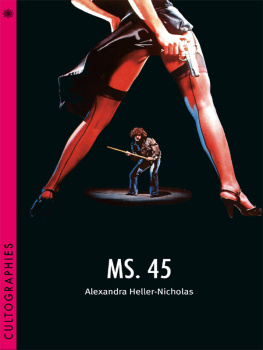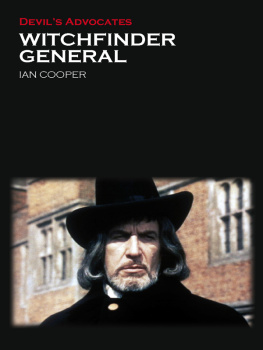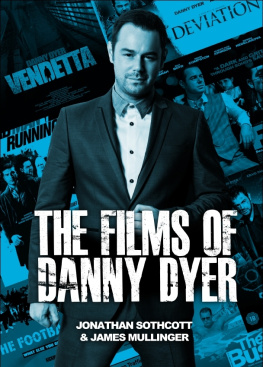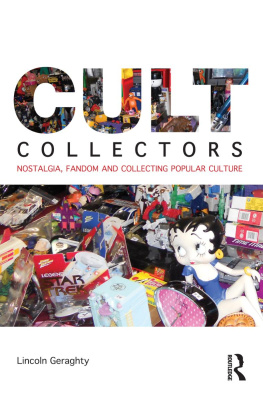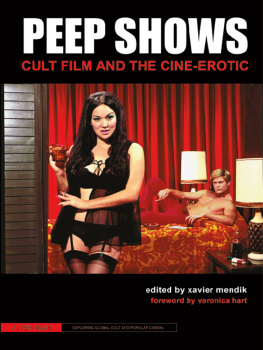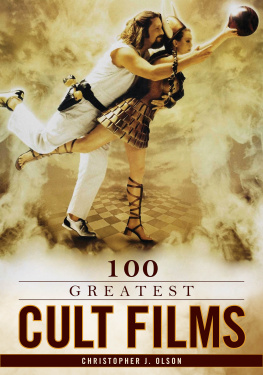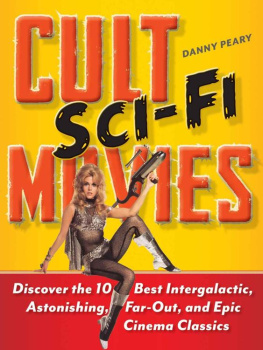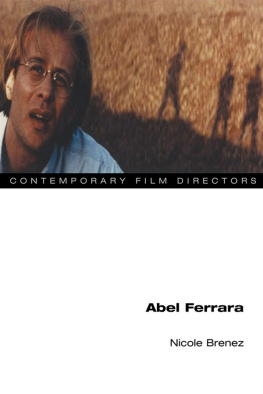Table of Contents
CULTOGRAPHIES
CULTOGRAPHIES is a new list of individual studies devoted to the analysis of cult film. The series provides a comprehensive introduction to those films which have attained the coveted status of a cult classic, focusing on their particular appeal, the ways in which they have been conceived, constructed and received, and their place in the broader popular cultural landscape. For more information, please visit www.cultographies.com
Series editors: Ernest Mathijs (University of British Columbia) and Jamie Sexton (Northumbria University)
OTHER PUBLISHED TITLES IN THE CULTOGRAPHIES SERIES
THE ROCKY HORROR PICTURE SHOW
Jeffrey Weinstock
DONNIE DARKO
Geoff King
THIS IS SPINAL TAP
Ethan de Seife
SUPERSTAR: THE KAREN CARPENTER STORY
Glyn Davis
BRING ME THE HEAD OF ALFREDO GARCIA
Ian Cooper
THE EVIL DEAD
Kate Egan
BLADE RUNNER
Matt Hills
BAD TASTE
Jim Barratt
QUADROPHENIA
Stephen Glynn
FASTER, PUSSYCAT! KILL! KILL!
Dean DeFino
FRANKENSTEIN
Robert Horton
THEY LIVE
D. Harlan Wilson
DEEP RED
Alexia Kannas
MS. 45
Alexandra Heller-Nicholas
For Raibell, my sister
A Wallflower Book
Published by
Columbia University Press
Publishers Since 1893
New York Chichester, West Sussex
cup.columbia.edu
Copyright 2017 Columbia University Press
All rights reserved
E-ISBN 978-0-231-85105-3
A complete CIP record is available from the Library of Congress
ISBN 978-0-231-17985-0 (pbk. : alk. paper) ISBN 978-0-231-85105-3 (e-book)
A Columbia University Press E-book.
CUP would be pleased to hear about your reading experience with this e-book at .
Series design by Elsa Mathern
Cover image: Ms. 45 (1981) Navaron Films
CONTENTS
Beauty is taking something all the way to the end.
Zo Tamerlis Lund, 1985
Every film is an exploitation film.
Abel Ferrara, 1993
There are a vast number of people whose support is essential in the creation of a book such as this. Most immediately, I express unhesitating gratitude to Cultographies series editors Ernest Mathijs and Jamie Sexton for their constant kindness, enthusiasm and assistance. The efforts of Yoram Allon, Commissioing Editor of Wallflower Press, and his colleagues there and at Columbia University Press are also deserving of my acknowledgement and appreciation.
Any work on Abel Ferrara is indebted on a very fundamental level not only to the director himself, but also to both Brad Stevens and Nicole Brenez (and the translator of her 2007 book on Abel Ferrara, Adrian Martin), whose dedicated critical attentions to his oeuvre are foundational. I am also deeply thankful to Robert Lund for his remarkable tribute at ZoeLund.com, a website that houses a wealth of material about this hugely significant cultural figure.
A number of people were involved in this project through interviews and other forms of support and assistance, and I have endless gratitude to them for their generosity and helpfulness: Miles Brown, Monica Castillo, BJ Colangelo, Hannah Foreman, Emma Gray Munthe, Philippa Hawker, Sarah Horrocks, Alison Nastasi, Anthony Nield and Arrow Films, Catticut Palich, Katie Skelly and Emma Westwood. Thanks also to Jon Stobezki from Drafthouse Films for so kindly allowing me to reproduce the promotional artwork from their exquisite 2013 re-release of the film.
Finally, this book would not have been possible without the support be it personally or professionally from the following people: Anton Bitel, Dean Brandum, John Edmond, Rachel Fensham, Mark Freeman, Lee Gambin, Wendy Haslem, Jade Henshaw, Ian Gouldstone, Ramon Lobato, Anne Marsh, Geoff Mayer, Ip McNally, Jan Napiorkowski, Angela Ndalianis, David Surman, James Tierney and Nacho Vigalondo. I would also like to thank my colleagues at Senses of Cinema Michelle Carey, Tim OFarrell, Daniel Fairfax and Dan Edwards and at the Platos Cave radio show on Melbourne radio station Triple R Cerise Howard, Thomas Caldwell and Josh Nelson.
Heartfelt love, as always, to Lorraine, Max and Richard, and of course, to the dual centres of my universe, Christian and Casper.
Few films have left quite the same cultural imprint as Abel Ferraras 1981 film Ms. 45. Described by film critic Phil Russell as one of the finest urban revenge movies of all time, (2012: 435), for Village Voices Stephanie Zacharek, Ms. 45 is weirdly elegant with a wild, rangy energy, like an exploding star cluster (2013). Imran Khan at Pop Matters has called it a razor-sharp mix of action-thriller, feminist theory, punk-rock and Greek tragedy, noting that Ms. 45 offers the kind of suspense drama that in recent times has often come across as cloying and forced (2014). As for director Abel Ferrara himself, the film is simply part of him. I close my eyes and I see the movie, he said. Ive got that movie indelibly printed in my DNA (Jagernauth 2013).
herself spells it Ms. 45 in her essay on feminism and her role in the film, The Ship with Eight Sails (and Fifty Black Cannons) (1993). For these reasons, this is the spelling that will be used throughout this book, but both Ms.45 and Ms .45 have been used interchangeably and both are broadly considered accurate.
The film follows protagonist Thana (played by Tamerlis Lund), a base-level fashion industry worker in New York Citys then-thriving Garment District. As a mute, she is unable to cry out for assistance when she is raped in an alley by a masked, gun-wielding assailant (played by Ferrara) on her way home from work one day, and on her arrival home she is again sexually assaulted by a burglar. Thana beats the second assailant to death with an iron, and is traumatised by the mental shock. After returning to work and facing her lecherous boss Albert (Albert Sinkys), she dismembers the corpse of the second rapist in her bathroom and stores the body parts in her refrigerator before dispersing them across town in trash bags.
Keeping the thiefs .45-caliber pistol, her mental health continues to deteriorate. Her peculiar behaviour at first comes to the attention of her neighbour Mrs. Nasone (Editta Sherman) and her dog Phil. On one of her walks through town to discreetly discard body parts, a man sees Thana dropping a bag and assumes it was a mistake. Attempting to return it, he chases her. The petrified Thana interprets this as another attempted sexual assault so shoots him dead. On her return home, Mrs. Nasone misreads Thanas nausea as illness and enters the girls apartment, bringing the smell of the refrigerator to the attention of Phil, compounding Thanas paranoia. This combines with an increased coverage of the body part discovery in the media.
Gender flipping Taxi Driver (Martin Scorsese, 1976): You talkin to me? Credit: Rochelle Films/Photofest Rochelle Films
Alberts lecherous behaviour towards Thana continues at work, and he invites her to the companys Halloween party. Thanas desire to punish men expands beyond the men who raped her specifically, and from this point onwards follows her misandrist killing spree: few are spared (even, it seems, Phil the dog). Thanas dramatic transformation is marked not only by her behaviour, but also by her physical appearance as she shifts from a meek, nervous girl-child to a vampy

